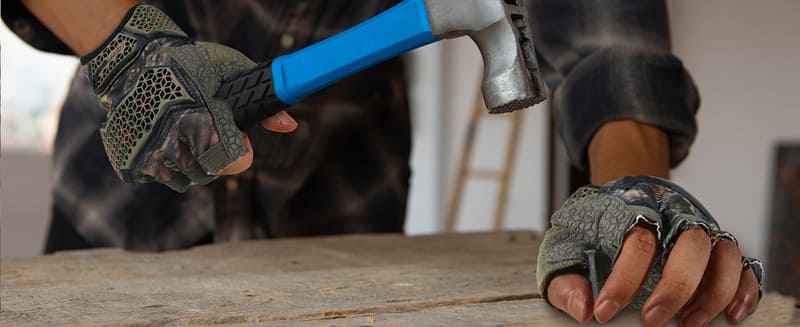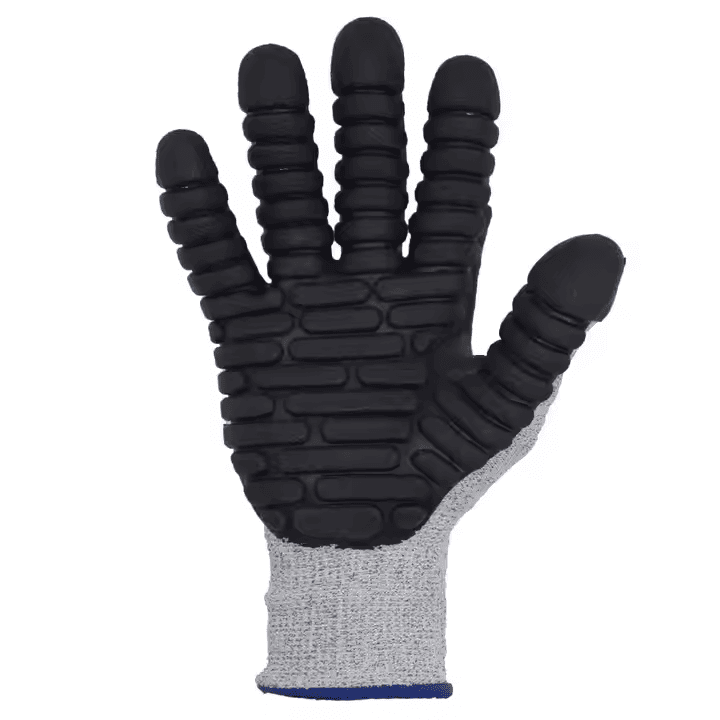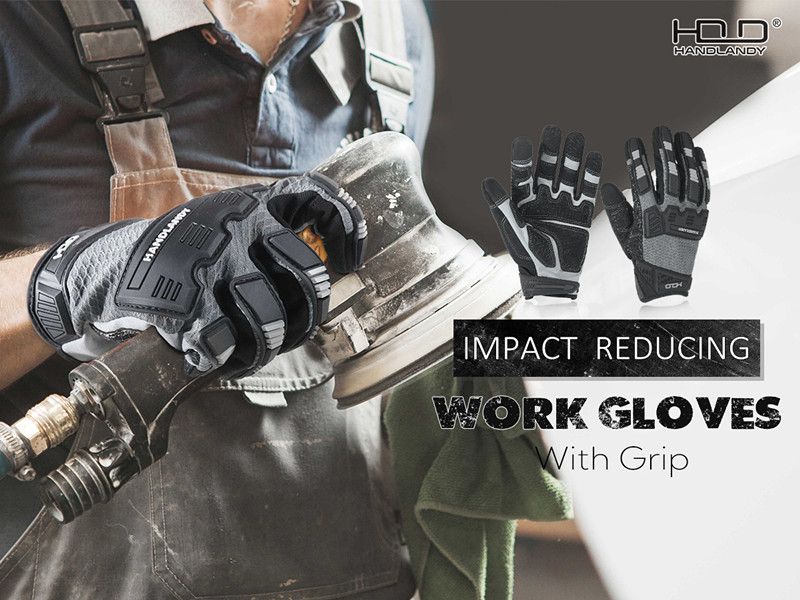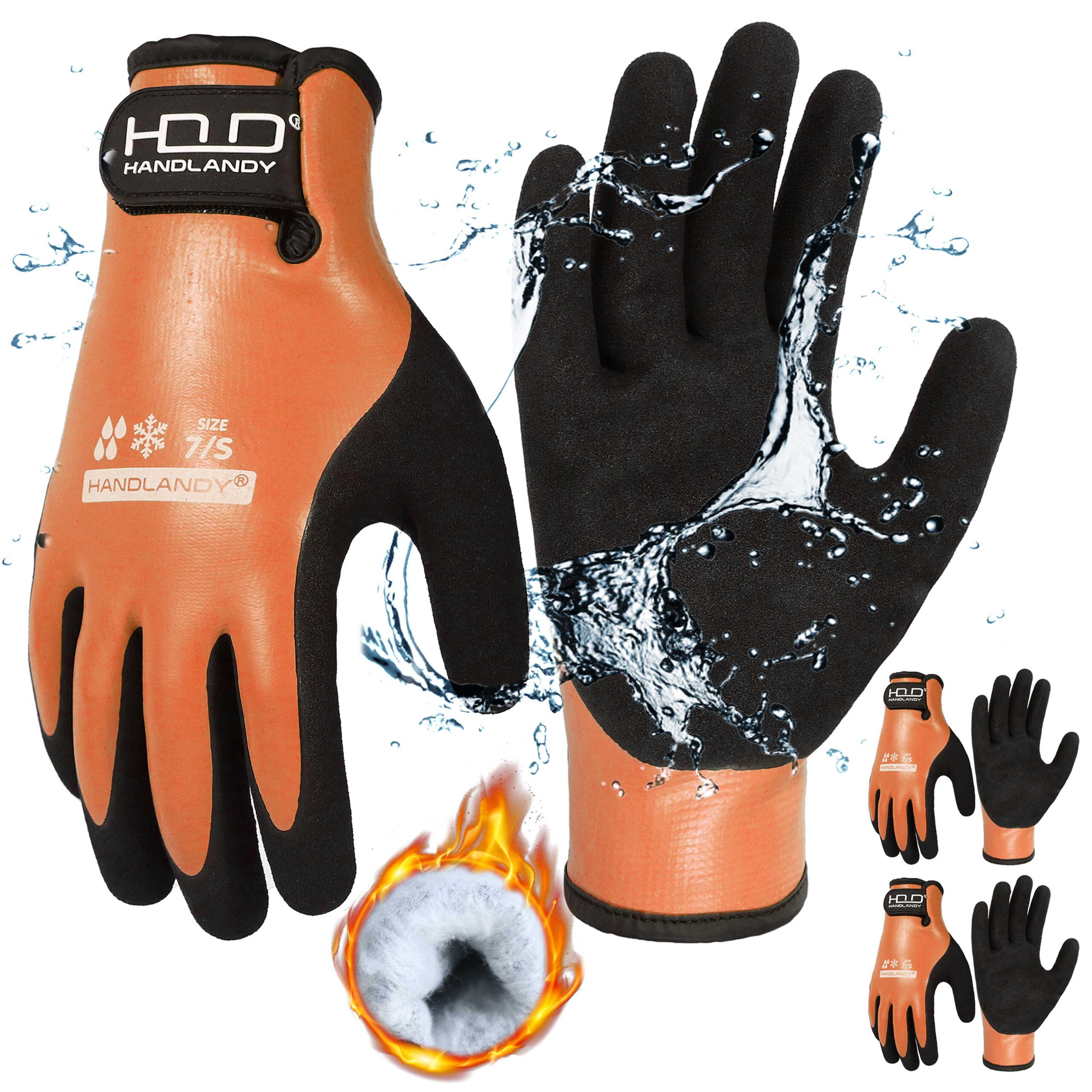No, impact gloves and anti-vibration gloves serve different purposes. Impact gloves protect the back of the hand from impacts and crush injuries, while anti-vibration gloves reduce the transmission of vibrations from tools to the hands. Choosing the right type depends on the specific risks involved in your work.
What Are Impact Gloves?

Impact gloves are designed to protect the back of the hand from sudden impacts, pinching, or crushing hazards. They are commonly used in construction, manufacturing, and the oil and gas industries.
Key Features of Impact Gloves:
- Backhand Protection: Reinforced thermoplastic rubber (TPR) shields the knuckles and fingers from impact injuries.
- Durability: Made from tough materials like synthetic leather and reinforced fabric.
- Grip & Dexterity: Often include textured palms for a secure grip without restricting movement.
What Are Anti-Vibration Gloves?

Anti-vibration gloves aim to reduce hand fatigue caused by prolonged exposure to vibrating tools, such as drills, grinders, and jackhammers. These gloves help reduce the risk of Hand-Arm Vibration Syndrome (HAVS), a condition caused by long-term vibration exposure.
Key Features of Anti-Vibration Gloves:
- Padded Palms: Use foam, gel, or air pockets to absorb vibration.
- Comfort Design: Typically have ergonomic padding for prolonged tool use.
- Compliance with Standards: Some gloves meet ISO 10819 standards for vibration reduction.
Comparison: Impact Gloves vs. Anti-Vibration Gloves
| Feature | Impact Gloves | Anti-Vibration Gloves |
|---|---|---|
| Main Purpose | Protect from impacts and crush injuries | Reduce vibration exposure |
| Protection Area | Back of the hand (knuckles & fingers) | Palms and fingers |
| Common Materials | TPR, synthetic leather, reinforced fabric | Foam, gel, air pockets |
| Best For | Construction, heavy machinery, oil & gas | Use with vibrating power tools |
| Effectiveness | Proven to reduce impact-related injuries | Effectiveness varies, and grip strength may decrease (EHS) |
Are Anti-Vibration Gloves Effective?
Studies show that while anti-vibration gloves can reduce vibration exposure, their effectiveness depends on the tool and frequency of vibration. Some gloves even amplify certain vibrations instead of reducing them. Additionally, excessive padding can reduce grip strength, leading to other safety risks.
Which Glove Should You Choose?
- Choose impact gloves if you work in construction, oil & gas, or any industry where hands are exposed to crush hazards.
- Choose anti-vibration gloves if you frequently use power tools that generate strong vibrations.
- In some cases, you may need both if your job involves both impact risks and prolonged tool use.
Final Thoughts
Impact gloves and anti-vibration gloves are designed for different types of hand protection. Selecting the right glove depends on your specific work hazards. If you need help choosing the best protective gloves, consult a safety expert or a trusted glove manufacturer.
For more information on hand protection, visit our website or contact us today.








